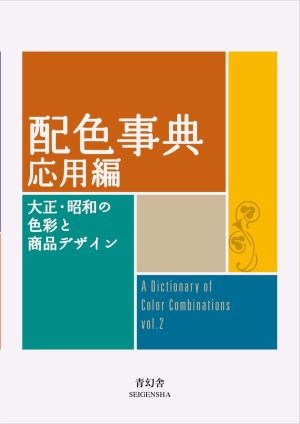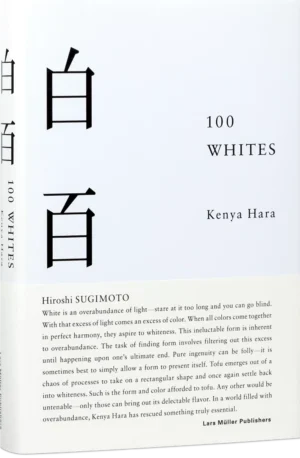di Rossella Menegazzo – Stefania Piotti – Kenya Hara
WA. The Essence of Japanese Design
EXPLORE THE BEAUTY, ESSENCE AND ENDURING IMPACT OF JAPANESE DESIGN
Through some 300 objects this book explores contemporary Japanese design: from everyday objects and packaging to interior design and lighting elements. Ultimately the book aims to explore the way in which Japanese design manages to harness its materials – whether natural or synthetic – and at the same time combines respect for tradition with forward-thinking and experimentation.
The objects featured were chosen because of their strong Japanese character and the influence this ‘Japaneseness’ has had on Western culture. Rather than following a chronological order or concentrating on the designers, this book focuses on the objects and is categorized by material, highlighting the strong link between design and material in Japan.
There will be a general introduction and then each section will have its own individual introduction:
– WOOD, BAMBOO & LACQUER
– PAPER
– METAL
– FABRIC & TEXTILES
– CERAMIC
– SYNTHETIC / NEW MATERIALS
The book will include examples from some of the most important Japanese designers from Sori Yanagi and Shiro Kuramata to Naoto Fukasawa and Tokujin Yoshioka and there will be an introductory essay about Japanese design by Kenya Hara.
> Rossella Menegazzo is Associate Professor of History of East Asian Art at the Università degli Studi of Milan. She completed her PhD Course in Oriental Studies at Ca’ Foscari University of Venice in 2009, with a dissertation on Japanese art history and photography. She has curated several events and exhibitions and is the author of numerous texts on Japanese photography, graphic design and ukiyoe. She is a regular contributor to a number of national newspapers, writing articles on Japanese culture and art.
> Stefania Piotti received her BA in East Asian studies from Ca’ Foscari University of Venice specializing in Japanese textiles and the development of kimono design and patterns in particular. She has worked as translator and scientific coordinator in various exhibitions on Japanese art and as editor of Italian and English publications such as Imai. A Retrospective (Electa, 1998), Hokusai (Phaidon, 2004) and Japan Style (Phaidon, 2007).
Veste editoriale: Brossura rilegata
Formato: 20,5×27
Pagine: 288
Immagini a colori-b/n: 300
Lingua: GB
Anno: 2014
ISBN: 9780714866963
Potrebbero interessarti anche:
Prodotti correlati
-
In Offerta
ATLAS OF INTERIOR DESIGN
98,00 €Il prezzo originale era: 98,00 €.89,00 €Il prezzo attuale è: 89,00 €. Aggiungi al carrello -
ANDREW MARTIN. Interior Design Review Vol.22
78,00 € Leggi tutto -
ANDREW MARTIN. Interior Design Review Vol.21
78,00 € Leggi tutto -
In Offerta
A DICTIONARY OF COLOR COMBINATIONS Vol.2
32,00 €Il prezzo originale era: 32,00 €.29,00 €Il prezzo attuale è: 29,00 €. Aggiungi al carrello
di Rossella Menegazzo – Stefania Piotti – Kenya Hara
WA. The Essence of Japanese Design
EXPLORE THE BEAUTY, ESSENCE AND ENDURING IMPACT OF JAPANESE DESIGN
Through some 300 objects this book explores contemporary Japanese design: from everyday objects and packaging to interior design and lighting elements. Ultimately the book aims to explore the way in which Japanese design manages to harness its materials – whether natural or synthetic – and at the same time combines respect for tradition with forward-thinking and experimentation.
The objects featured were chosen because of their strong Japanese character and the influence this ‘Japaneseness’ has had on Western culture. Rather than following a chronological order or concentrating on the designers, this book focuses on the objects and is categorized by material, highlighting the strong link between design and material in Japan.
There will be a general introduction and then each section will have its own individual introduction:
– WOOD, BAMBOO & LACQUER
– PAPER
– METAL
– FABRIC & TEXTILES
– CERAMIC
– SYNTHETIC / NEW MATERIALS
The book will include examples from some of the most important Japanese designers from Sori Yanagi and Shiro Kuramata to Naoto Fukasawa and Tokujin Yoshioka and there will be an introductory essay about Japanese design by Kenya Hara.
> Rossella Menegazzo is Associate Professor of History of East Asian Art at the Università degli Studi of Milan. She completed her PhD Course in Oriental Studies at Ca’ Foscari University of Venice in 2009, with a dissertation on Japanese art history and photography. She has curated several events and exhibitions and is the author of numerous texts on Japanese photography, graphic design and ukiyoe. She is a regular contributor to a number of national newspapers, writing articles on Japanese culture and art.
> Stefania Piotti received her BA in East Asian studies from Ca’ Foscari University of Venice specializing in Japanese textiles and the development of kimono design and patterns in particular. She has worked as translator and scientific coordinator in various exhibitions on Japanese art and as editor of Italian and English publications such as Imai. A Retrospective (Electa, 1998), Hokusai (Phaidon, 2004) and Japan Style (Phaidon, 2007).
Veste editoriale: Brossura rilegata
Formato: 20,5×27
Pagine: 288
Immagini a colori-b/n: 300
Lingua: GB
Anno: 2014
ISBN: 9780714866963
Potrebbero interessarti anche:
FAQ
Leggi le domande frequenti per avere maggiori informazioni sui metodi di pagamento, la spedizione e molto altro
Per acquistare uno o più libri è sufficiente compilare l’apposito modulo al quale si accede dalla scheda di ciascun libro.
Qualora i volumi ordinati non siano tutti immediatamente disponibili, il nostro staff si riserva di contattarti via mail per concordare le modalità di spedizione (A: invio immediato dei volumi presenti a magazzino e successivo invio di quelli mancanti – B. invio unico dopo il ricevimento da parte nostra dei volumi mancanti).
N.B. la fattura deve essere esplicitamente richiesta al momento dell’ordine, comunicando la ragione sociale completa di partita IVA e/o Codice Fiscale e Codice SDI.
Ai sensi dell’Art.5 del relativo Decreto, l’acquirente ha il diritto di recedere dal contratto e restituire i volumi ordinati entro 10 giorni lavorativi, purchè nel medesimo stato in cui li ha ricevuti. Il diritto di recesso dovrà essere esercitato mediante invio di lettera raccomandata A.R. a: LIMOND S.a.s. – via Arnolfo di Cambio 24/A – 37138 Verona (VR) – entro il termine di 10 (dieci) giorni lavorativi dal ricevimento dei volumi.
Tutti i resi dovranno essere autorizzati da Limond S.a.s (tel. +393472455641) con l’assegnazione di un numero di autorizzazione alla resa. Le spese di spedizione saranno interamente a carico del cliente e non si accetteranno pacchi in contrassegno.
Al ricevimento dei volumi, e verificata la loro integrità, Limond S.a.s. provvederà, entro 10 (dieci) giorni, ad accreditare il cliente del valore dei volumi restituiti.
La tempestività nell’evasione dell’ordine è determinata dalla disponibilità della merce ordinata. In caso di immediata disponibilità l’ordine verrà evaso entro 2 giorni lavorativi. Qualora uno o più libri non dovessero essere presenti a magazzino possono essere ordinati su richiesta; il nostro staff informerà il cliente, via mail, circa i tempi necessari per l’evasione dell’ordine.
Pagamento tramite bonifico bancario anticipato alle coordinate comunicate in fase di check-out
I costi di invio (che comprendono imballo e spedizione) per libri e riviste in ITALIA sono i seguenti:
Servizio postale: 3-5 gg (per merce immediatamente disponibile presso il nostro magazzino)
- Spedizioni per acquisti fino a 62,00€: €5,50
- Spedizioni per acquisti fino a 120,00€: €9,50
- Spedizioni per acquisti superiori a 120,00€: Gratuite
Per una quotazione dei costi di invio in EUROPA o per spedizioni internazionali vengono richiesti i seguenti dati:
- Nome/Cognome
- Indirizzo (comprensivo di Codice postale)
- Telefono (meglio se Cellulare)
Alla conferma di accettazione, verranno comunicate coordinate bancarie/account PayPal da utilizzare per il pagamento. Un Una volta ricevuto, verrà evasa la spedizione inoltrando notifica e tracciabiltà.








